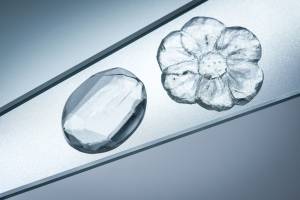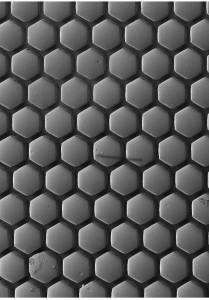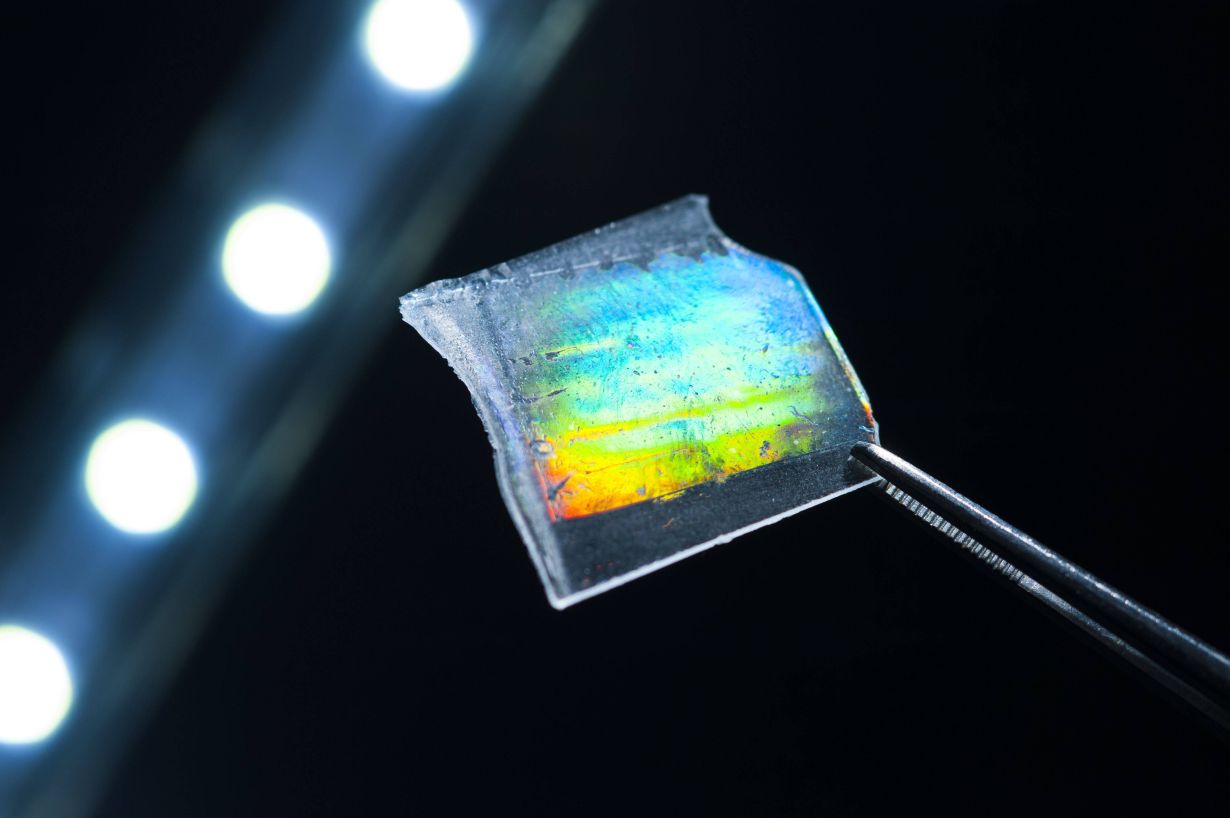Pure quartz glass is highly transparent and resistant to thermal, physical, and chemical impacts. These are optimum prerequi-sites for use in optics, data technology or medical engineering. For efficient, high-quality machining, however, adequate pro-cesses are lacking. Scientists of Karlsruhe Institute of Technolo-gy (KIT) have developed a forming technology to structure quartz glass like a polymer. This innovation is reported in the journal Advanced Materials.
Video „Glassomer—Processing Fused Silica Glass Like a Polymer“ (Advanced Materials): Glassomer—Processing Fused Silica Glass Like a Polymer:
“It has always been a big challenge to combine highly pure quartz glass and its excellent properties with a simple structuring technol-ogy,” says Dr. Bastian E. Rapp, Head of the NeptunLab interdisci-plinary research group of KIT’s Institute of Microstructure Technolo-gy (IMT). Rapp and his team develop new processes for industrial glass processing. “Instead of heating glass up to 800 °C for form-ing or structuring parts of glass blocks by laser processing or etch-ing, we start with the smallest glass particles,” says the mechanical engineer. The scientists mix glass particles of 40 nanometers in size with a liquid polymer, form the mix like a sponge cake, and harden it to a solid by heating or light exposure. The resulting solid con-sists of glass particles in a matrix at a ratio of 60 to 40 vol%. The polymers act like a bonding agent that retains the glass particles at the right locations and, hence, maintains the shape.


With Glassomer, glass components similar to that shown above can be produced by cutting. (Photos: Markus Breig, KIT)
This “Glassomer” can be milled, turned, laser-machined or pro-cessed in CNC machines just like a conventional polymer. “The en-tire range of polymer forming technologies is now opened for glass,” Rapp emphasizes. For fabricating high-performance lenses that are used in smartphones among others, the scientists produce a Glassomer rod, from which the lenses are cut. For highly pure quartz glass, the polymers in the composite have to be removed. For doing so, the lenses are heated in a furnace at 500 to 600 °C and the polymer is burned fully to CO2. To close the resulting gaps in the material, the lenses are sintered at 1300 °C. During this pro-cess, the remaining glass particles are densified to pore-free glass.

High-resolution microstruc-tures can be produced by rep-lication. (Photo: NeptunLab)
This forming technology enables production of highly pure glass materials for any applications, for which only polymers have been suited so far. This opens up new opportunities for the glass pro-cessing industry as well as for the optical industry, microelectron-ics, biotechnology, and medical engineering. “Our process is suited for mass production. Production and use of quartz glass are much cheaper, more sustainable, and more energy-efficient than those of a special polymer,” Rapp explains.
This is the third innovation for the processing of quartz glass that has been developed by NeptunLab on the basis of a liquid glass-polymer mixture. In 2016, the scientists already succeeded in using this mixture for molding. In 2017, they applied the mixture for 3D printing and demonstrate its suitability for additive manufacture. Within the framework of the “NanomatFutur” competition for early-stage researchers, the team was funded with EUR 2.8 million by the Federal Ministry of Education and Research from 2014 to 2018. A spinoff now plans to commercialize Glassomer.
Original publication
F. Kotz, N. Schneider, A. Striegel, A. Wolfschläger, N. Keller, M. Worgull, W. Bauer, D. Schild, M. Milich, C. Greiner, D. Helmer, B. E. Rapp: “Glassomer: Processing Fused Silica Glass like a Polymer”, Advanced Materials, 2018: https://onlinelibrary.wiley.com/doi/epdf/10.1002/adma.201707100
More information on NeptunLab: www.neptunlab.org
More information on Glassomer GmbH: www.glassomer.com
Being “The Research University in the Helmholtz Association”, KIT creates and imparts knowledge for the society and the environment. It is the objective to make significant contributions to the global challenges in the fields of energy, mobility, and information. For this, about 10,000 employees cooperate in a broad range of disciplines in natural sciences, engineering sciences, economics, and the humanities and social sciences. KIT prepares its 22,800 students for responsible tasks in society, industry, and science by offering research-based study programs. Innovation efforts at KIT build a bridge between important scientific findings and their application for the benefit of society, economic prosperity, and the preservation of our natural basis of life. KIT is one of the German universities of excellence.

